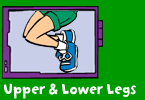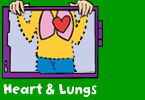BAM! Body and Mind
Physical Activity
Physical Activity

 Taline Tahmassian is the 18-year-old forward for the Santa Clara University women's soccer team — the 2001 national champions! Taline's family of soccer sensations introduced her to the game at an early age. Taline says, "Soccer is in my blood — I have always been around it. When I was younger, I looked at my brother and sister and wanted to be like them. I played on the sidelines at their games, and I was always involved. My father, sister, and brother all played soccer at the collegiate level...I was destined to play!"
Taline Tahmassian is the 18-year-old forward for the Santa Clara University women's soccer team — the 2001 national champions! Taline's family of soccer sensations introduced her to the game at an early age. Taline says, "Soccer is in my blood — I have always been around it. When I was younger, I looked at my brother and sister and wanted to be like them. I played on the sidelines at their games, and I was always involved. My father, sister, and brother all played soccer at the collegiate level...I was destined to play!"
Read More!


Nikolai Kutsenko of the Ukraine juggled a soccer ball for 24 1/2 hrs nonstop with his feet, legs and head — the ball never touched the ground!
Soccer players can run as many as 6 or 7 miles during the course of a game.
Since 1982, the University of North Carolina women's soccer team has won 14 National Championships.
Soccer players can run as many as 6 or 7 miles during the course of a game.
Since 1982, the University of North Carolina women's soccer team has won 14 National Championships.
Centers for Disease Control and Prevention, 1600 Clifton Rd, Atlanta, GA 30333, U.S.A
Tel: (404) 639-3311 / Public Inquiries: (404) 639-3534 / (800) 311-3435
Tel: (404) 639-3311 / Public Inquiries: (404) 639-3534 / (800) 311-3435
